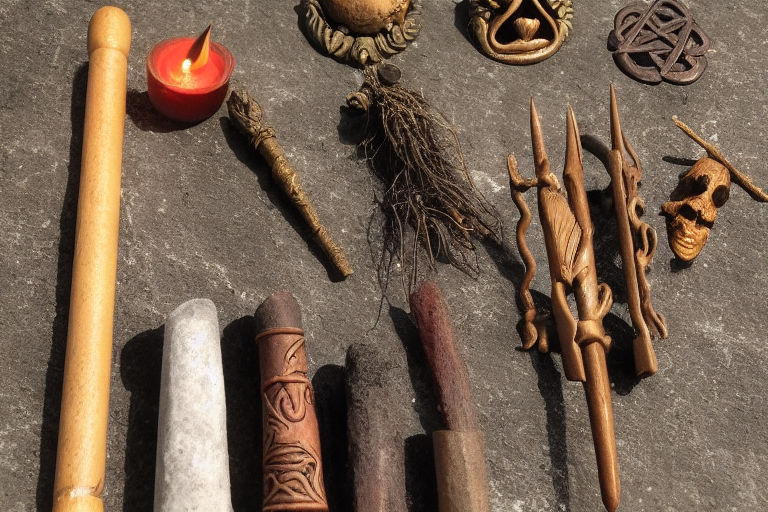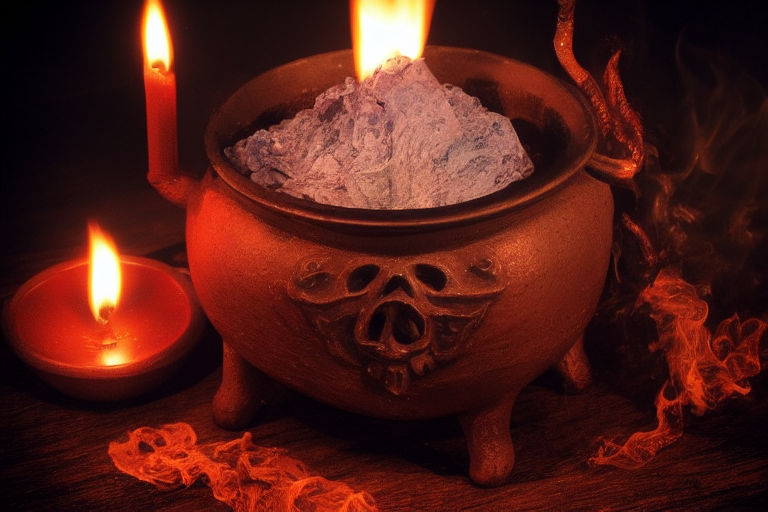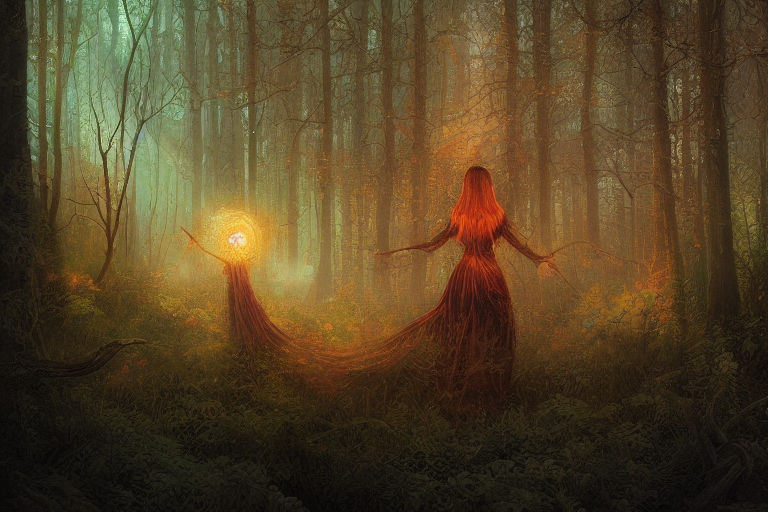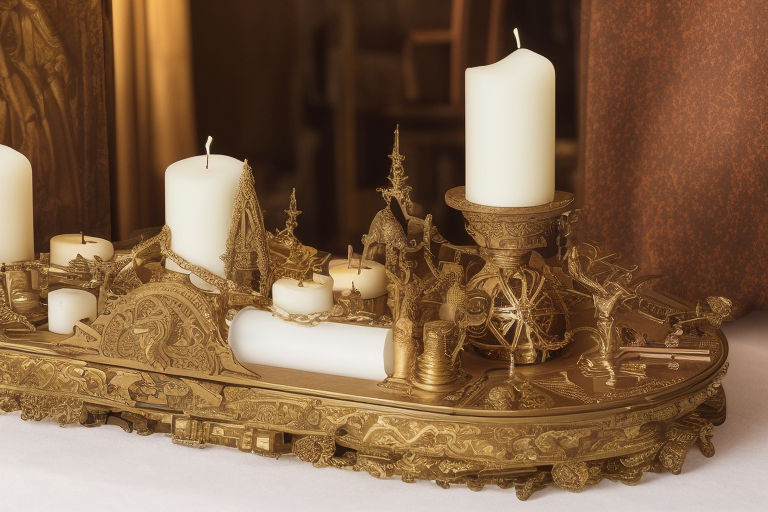What is the Difference Between Pagan and Heathen?
What is the Difference Between Pagan and Heathen? The term “Pagan” comes from the Latin, meaning “country dweller”, while “Heath” refers to the Northern European “heath dweller” people. Heathens followed the Northern Ancestral Tradition, which was not organized and varied greatly from village to village. Dogma was almost nonexistent. In short, they had no official religion, but followed different religious practices and beliefs.
Religion
The terms pagan and heathen are used to describe individuals who practice non-Christian religious practices. Both terms were originally used as derogatory descriptions of non-Christian cultures. The term heathen was also used to refer to people who worshiped idols, but that meaning has changed over time. Today, it is used to describe followers of Neo-Germanic and Scandinavian new age religions. In addition, the terms heathen and pagan can be used to refer to anyone who practices any of these other religions.
Among the gods revered by Heathens are the Norns, the goddess of fertility and Thor. The heathens also worship various hidden folk, such as the wights. A special bowl is kept by Heathens near garden altars. In addition, different heathen groups and individuals celebrate different seasonal holidays and different gods. Among the differences between pagan and heathen religions is the recognition of various spiritual beings.
A majority of Heathens are members of small groups called ‘hearths’ or ‘kindreds’. These groups may meet to perform religious rituals at members’ homes. Some of these groups have recognised leaders; others are more egalitarian. Despite these differences, many Heathens have joined the wider pagan community. While many Heathens are not part of organized religion, many are involved in the community for social and political reasons.
Festivals
While the differences between pagan and heathen religions are subtle, they do exist. The pagan holidays are more rooted in ancient Germanic traditions. Some Heathens also incorporate innovations from the 20th century. Here is a list of the most common heathen holidays. You may have a hard time determining the differences between Pagan and Heathen festivals – and how to tell them apart. The key difference is that Heathens generally celebrate more of the same festivals.
The Heathens have many local Gods and Goddesses, many of which are known through votive stones, runic inscriptions, and medieval literature. Most Heathens actively honour a subset of these Gods, making offerings to all. Some Heathens form close relationships with specific Gods because they hold important roles in their lives. They view their Gods as complex personalities. This is an important distinction for Heathens.
Beltane is an early-May festival that honors the energy of sexuality and union. Pagans often perform a maypole dance, which involves circling around a pole decorated with colorful braids. The maypole dance is often a playful, colorful celebration, and is followed by feasting and exchanging baskets of flowers. These rituals often feature libido-enhancing practices, as well as a reconnection with nature.
Gods
Paganism is an umbrella term for non-Abrahamic religions. Among these, pagan is the religion of nature, and heathen is the religion of multiple gods. Christians use the term heathen to denigrate non-Christians. The two terms are also interchangeable, though the focus of heathenism may be emphasized in a given context. The following is a short discussion of the differences between pagan and heathen religion.
Most Heathens do not practice Christian beliefs, but are involved in the larger pagan community for a variety of social and political reasons. This summary draws on an article by the BBC website in 2003. It was updated and revised with contributions from the Heathens of Yorkshire and Geoff Davison. Rich Blackett also provided valuable research assistance. This article was originally published in 2003 but has been updated with the help of Geoff Davison and Dan Coultas.
The difference between pagan and heathen religions can be seen in the concept of good and evil. Heathenry rejects the notion that all Goddesses are aspects of ‘The Goddess’ and that Gods are archetypes of the unconscious mind. Furthermore, Heathens do not follow the Eight-Fold Wheel of the Year and do not conduct rituals such as casting circles or calling quarters. Furthermore, heathenry is a non-magical religion, and most people do not consider themselves witches. Heathens also do not have high priests, and there are no degrees of initiation.
Rituals
A common theme in Heathen and pagan rituals is the worship of ancestors. This can be your literal forebears or the dead ones who inspired your life. These rites include blot and sumbel, a gathering that celebrates important events, rites of passage and the need of the community. Heathens also have a unique way of honoring the gods, including a rite of passage known as the blot.
While there is no standard set of rituals between heathen and pagan communities, some aspects of each are similar. For instance, the use of the circle in a heathen ritual is a hallmark of pagan worship. Heathens often perform rituals outdoors, but pagans often perform them in indoor settings. In either case, rituals may have taboos and restrictions. A ritual may be performed by a priest, priestess, or both.
Whether you practice Wicca or Heathen traditions, it’s important to understand the differences between the two. Both groups recognize a variety of spiritual entities, but some of them are more prominent in Heathen practices. Norns, or female ancestral spirits, are common examples. Additionally, Heathens engage in rituals with hidden folk and housewights. They also require permission from these spirits before performing outdoor rituals.
Holidays
The similarities and differences between Pagan and Heathen festivals are outlined below. The two major Pagan festivals are Winter Solstice and Summer Solstice, and they are marked by alternating solar and earth-centered events. The former celebrates the return of light, while the latter honors the gods. Both celebrations have a spiritual focus, and both have rituals that are performed at night.
One major difference is the origin of the festivals. The Germanic equivalent of Valentine’s Day, May Day is a night of love and romance. Young men are expected to collect wildflowers and green branches and decorate the windows of their loved ones. Heathens honor the goddess Freya, the mistress of love and witchcraft. Some groups celebrate this festival by planting a “May Tree”, a tree that blooms in spring and is carried in processions. The ancient Heathen festivals have been heavily influenced by Christianity.
In modern Asatru, February 14 is the “Feast of Vali”. While Saint Valentine is not associated with Lupercalia, many Heathens honor Lupercalia on this day. This day was also chosen to commemorate Oliver the Martyr, an adherent of Asatru. He was executed by St. Olaf’s men, as were many other Heathen men who performed underground sacrifices.
Observances
Observances between Pagans and Heathens vary greatly. Heathens are those who resurrect pre-Christian Germanic and Scandinavian traditions. Wiccans and non-reconstructionist pagans tend to focus on the concept of ‘The Goddess’. Both groups believe in different gods and celebrate different festivals according to their cosmological beliefs. Heathens have different traditions, beliefs, and rituals than Wiccans and modern non-reconstructionist pagans.
The Heathen religion is not based on one single god, but is based on many local Gods. Observances between Pagans and Heathens tend to revolve around small groups, or on those with regular associations. For example, a sailor might worship the Norse god Njordr, the Anglo-Saxon god Wada, or the Irish Goddess Eostre. Observances between Pagan and Heathen religions may be as varied as the cultures of the two traditions.
The main rituals performed by Heathens are known as blots and symbel. During these rituals, the participants pass drinking horns, vessels, and other ritual objects around the circle. Typically, a “familial priest” performs the ritual. Other hearth members may also participate as assistants or observers. Heathens may also perform two rituals called blot and sumbel.
Origins
The terms “pagan” and “heathen” have been used to describe people who do not follow the gods of the Northern Hemisphere, notably Christianity. However, over time, both terms have taken on pejorative meanings. In the West, the terms were used to dehumanize indigenous people, and today, they are commonly used in a pejorative manner. For example, a New York City resident may be a heathen if they practice a native religion or practice.
The term “pagan” is derived from the latin word “pagae,” which the christians used to refer to non-Christians in anglo-saxon England. The old English term “heathen” was “haeden,” which is cognate to the old norse word heidinn. It may even derive from the gothic word “haithno.” The term “heathen” is now a noun that refers to people who do not believe in the Christian god. In biblical times, the word heathen meant “unconverted member of a people.”
In Europe, Heathenry was a common practice that recognized many gods. Several of the gods most commonly associated with the Heathen religion were a part of the Norse mythology, although many people outside of Scandinavia also honoured them. In early Germanic tribes, Woden was known as Odhinn, and he was known as “Woden” or “Wuotan” in Old High German and Anglo-Saxon. Today, he is regarded as the god of the Wednesday, Thursday, and Friday, respectively.
Understanding the Difference Between a Pagan and a Heathen: Unraveling the Mysteries of Sumbel Rituals
In the diverse landscape of spiritual practices, the terms “Pagan” and “Heathen” often spark curiosity and intrigue. These terms are used to describe individuals who follow ancient polytheistic belief systems and have a deep reverence for nature and its cycles. While Paganism and Heathenism share common roots in pre-Christian traditions, they also have distinct characteristics that set them apart. In this article, we will explore the differences between Paganism and Heathenism, delve into the ancient Pagan origin of toasting, and demystify the sacred Sumbel ritual.
Paganism and Heathenism: Unraveling the Definitions
1. Paganism: Embracing Nature’s Mysteries
Paganism is a broad term that encompasses a diverse range of spiritual beliefs, practices, and traditions. It is an umbrella term that includes various paths such as Wicca, Druidism, and Shamanism, among others. Pagans have a deep connection with nature and its cycles, often worshipping multiple deities and spirits that embody natural elements like the sun, moon, earth, and water.
Paganism celebrates the sacredness of life and emphasizes harmony with the environment. Rituals and ceremonies are an integral part of Pagan practices, and they often involve honoring the changing seasons, moon phases, and celestial events.
2. Heathenism: Honoring Ancestral Traditions
Heathenism, also known as Germanic Heathenry or Heathenry, is a specific branch of Paganism that draws its roots from ancient Germanic and Scandinavian traditions. Heathens primarily worship Germanic deities like Odin, Thor, and Freyja, and they revere their ancestors, who are believed to guide and protect them from the spirit world.
Heathens have a strong sense of cultural identity and often seek to reconstruct and revive pre-Christian Germanic practices. These may include rituals for agricultural prosperity, battle blessings, and honoring the cycle of life and death.
The Pagan Origin of Toasting: A Celebratory Ritual
1. The Toasting Tradition in Pagan Celebrations
Toasting, raising a glass in celebration or commemoration, is a custom deeply rooted in Pagan traditions. The act of toasting has ancient origins, dating back to the time when Pagans gathered to honor their deities, celebrate seasonal festivities, and commemorate significant life events.
Toasting was a way to express gratitude to the gods, spirits, and ancestors for their blessings and guidance. It also served as a means of sharing good fortune and building camaraderie among the community. The practice of toasting is a reflection of the interconnectedness of all beings and the joy of communal celebrations.
2. Modern-Day Toasting in Pagan Gatherings
In modern Pagan gatherings and rituals, toasting continues to be a cherished tradition. Whether it’s raising a chalice of mead to honor the gods or offering a toast to celebrate the changing seasons, toasting brings a sense of unity and joy to the participants.
In Pagan handfasting ceremonies, couples may exchange toasts as a symbolic gesture of sharing their hopes and dreams for their shared journey. Additionally, during the festive feast of Samhain, Pagans may raise their glasses to express gratitude for the harvest and honor the spirits of the departed.
Unveiling the Sumbel Ritual: A Sacred Heathen Tradition
1. What is the Sumbel Ritual?
Sumbel, a central ritual in Heathenry, is a sacred and communal gathering that fosters a deep sense of connection with the ancestors and gods. This ritual is conducted in a formal setting, typically during religious festivals, weddings, and other significant life events.
During the Sumbel, participants sit in a circle, and a horn or drinking vessel is passed around. Each participant has an opportunity to make a toast, recite poetry, share personal experiences, or express gratitude to the deities and ancestors. The Sumbel serves as a conduit for communication with the divine and a means of building bonds within the community.
2. Conducting the Sumbel Ritual
To conduct a Sumbel ritual, follow these steps:
Step 1: Set the Sacred Space
Choose a suitable location for the ritual, preferably outdoors or in a space with a connection to nature. Create an altar or central focal point where the drinking horn or vessel will be placed.
Step 2: Invocation
Begin the ritual with an invocation to the gods and ancestors, seeking their presence and blessings throughout the Sumbel.
Step 3: The Passing of the Horn
Designate a person to serve as the leader of the Sumbel. This individual starts the ritual by raising the horn and making the first toast, typically honoring a deity or ancestor.
Pass the horn clockwise around the circle, allowing each participant to take their turn and share their offerings, thoughts, or experiences.
Step 4: Words of Gratitude and Blessings
As the horn is passed, participants can express their gratitude, recite poetry, or make offerings to the gods and spirits. This part of the Sumbel fosters a sense of community and shared experiences.
Step 5: The Three Rounds
The Sumbel traditionally consists of three rounds, each with a different focus:
- First Round: Honoring the gods and goddesses.
- Second Round: Remembering the ancestors and departed loved ones.
- Third Round: Toasts to personal achievements, aspirations, and blessings.
Step 6: Closing the Ritual
Once the third round is complete, the leader of the Sumbel formally closes the ritual, expressing gratitude to the gods and ancestors for their presence. Participants may join in a final chant, song, or prayer to conclude the ceremony.
Pagan vs. Heathen: Embracing the Diversity of Beliefs
1. Emphasis on Nature and Ancestry
While both Paganism and Heathenism share a deep reverence for nature and the cycles of life, they have different focal points in their spiritual practices. Paganism, as an umbrella term, encompasses a wide array of traditions, each with its specific emphasis. Druids may focus on the sacredness of trees and nature spirits, while Wiccans may venerate the goddess and god as embodiments of the natural forces.
Heathenism, on the other hand, centers around the customs and beliefs of ancient Germanic and Scandinavian societies. Heathens place significant importance on ancestral reverence, seeking guidance from their forebears and honoring the wisdom passed down through generations.
2. Deities and Pantheons
In Paganism, practitioners may worship deities from various pantheons, including but not limited to Celtic, Greek, Egyptian, and Norse gods. The choice of deities is often based on personal affinity and spiritual connections.
Heathens, on the other hand, primarily worship Germanic deities, forming a close bond with figures like Odin, Thor, Freyja, and Frigg. The gods and goddesses of the Norse and Germanic pantheons play a central role in Heathen practices, reflecting the cultural roots and ancestral ties of this tradition.
3. Rituals and Traditions
Both Paganism and Heathenism include rituals and ceremonies, but the specific practices and customs may differ. Pagan rituals often draw inspiration from the cycles of nature, celebrating seasonal changes and celestial events.
Heathen rituals, like the Sumbel, emphasize community, ancestry, and personal connections with the gods. These rituals often involve toasting, feasting, and reciting poetry as a means of expressing devotion and gratitude.
Heathenism vs. Paganism: Embracing Diversity within the Spiritual Realm
1. Recognizing Unique Paths
While Heathenism falls under the umbrella of Paganism, it represents a distinct spiritual path with its unique traditions, beliefs, and practices. Recognizing this diversity within the Pagan community is essential, as it promotes understanding and respect for the various paths embraced by individuals.
2. Building Bridges Across Traditions
Instead of viewing Heathenism and Paganism as separate entities, embracing the interconnectedness of these paths can lead to a richer and more inclusive spiritual experience. Shared values, such as reverence for nature and respect for ancestors, can serve as bridges between different traditions, fostering a sense of unity and collaboration within the broader Pagan community.
In the ever-evolving landscape of spirituality, Paganism and Heathenism offer a rich tapestry of beliefs, traditions, and rituals. Paganism, as an inclusive umbrella term, embraces a myriad of paths, each with its distinct emphasis on nature and the divine.
Heathenism, a specific branch of Paganism, honors the ancient traditions of Germanic and Scandinavian societies, emphasizing ancestral connections and the worship of Germanic deities.
The sacred Sumbel ritual, deeply rooted in Heathen practices, brings communities together to honor the gods and ancestors, fostering a sense of unity and spiritual connection.
As we explore the differences and intersections between Paganism and Heathenism, may we celebrate the diversity within the spiritual realm and embrace the interconnectedness that unites us all in the journey of seeking meaning, wisdom, and enlightenment.
As we immerse ourselves in the rich tapestry of Paganism and Heathenism, the Sumbel ritual stands as a testament to the profound connections between individuals, the divine, and the ancestral realm. By exploring the Pagan origin of toasting and understanding the nuances between Paganism and Heathenism, we gain a deeper appreciation for the diverse spiritual paths that enrich the human experience.
Let us raise our horns and toast to the beauty of nature, the wisdom of our ancestors, and the boundless mysteries that await us in the realms of the divine. May the sacred Sumbel ritual continue to foster unity, celebration, and spiritual growth within the hearts of those who embrace its timeless traditions.
FAQs
Is heathen the same as pagan?
No, heathen and pagan are not the same. While they both fall under the umbrella of alternative spiritual practices, they have distinct origins, beliefs, and cultural contexts. Pagan is an umbrella term encompassing a wide range of nature-centered, polytheistic, or earth-based religions, while heathen refers specifically to the revival or reconstruction of pre-Christian Germanic or Norse traditions.
What does Heathen believe in?
Heathen beliefs vary depending on the specific tradition and individual interpretation. Generally, heathens follow the ancient spiritual and mythological practices of the Germanic or Norse peoples. They honor a pantheon of gods and goddesses, such as Odin, Thor, Freya, and Loki, and often emphasize the concepts of honor, reciprocity, and ancestral veneration. Some heathens also incorporate elements of nature worship, magic, and divination into their practice.
Who is considered a heathen?
Anyone who actively follows or practices the reconstructed Germanic or Norse traditions can be considered a heathen. This includes individuals who identify as Asatruar, Odinists, or practitioners of other heathen paths. It’s important to note that heathenry is an individual spiritual path, and not all individuals of Germanic or Norse ancestry identify as heathens or follow these traditions.
What is considered pagan?
Pagan is an umbrella term encompassing a diverse range of spiritual and religious beliefs that are not part of the major world religions. Paganism generally refers to earth-based, nature-centered, or polytheistic spiritual paths. It can include traditions such as Wicca, Druidry, Shamanism, Hellenism, and various indigenous or tribal religions. Pagans may worship multiple gods and goddesses, have a deep connection with nature, honor ancestral traditions, and practice magic or divination.
Is heathenry exclusively Norse or Germanic?
Yes, heathenry is primarily associated with the revival or reconstruction of pre-Christian Norse or Germanic traditions. It focuses on the mythology, gods, and cultural practices of these specific ancient cultures.
Can a person be both pagan and heathen?
Yes, it is possible for someone to identify as both pagan and heathen. Some individuals may incorporate aspects of heathenry into their broader pagan practice or follow both heathen and non-heathen spiritual paths simultaneously.
Are there specific rituals or ceremonies in heathenry?
Yes, heathenry includes a variety of rituals and ceremonies that are inspired by historical practices. These may involve blot (sacrificial) ceremonies, sumbel (ritual toasting), blótspánn (divination), or seasonal celebrations, such as Yule and Midsummer.
How does the concept of Wyrd fit into heathen beliefs?
Wyrd is a concept central to heathenry, representing the interconnectedness of all things and the inherent destiny or fate of individuals. It emphasizes personal responsibility and the idea that our actions shape our own destinies.
Are there specific holy days or festivals in heathenry?
Yes, heathenry observes a number of holy days or festivals that correspond with the ancient Norse or Germanic calendar. These include Ostara, Walpurgisnacht, Freyfaxi, and Winternights, among others.
Is magic a part of heathenry?
Yes, magic, also known as seidr or galdr, is a part of some heathen practices. It involves rituals, spells, and divination aimed at influencing or interacting with the natural and spiritual realms.
Do heathens have specific moral or ethical guidelines?
Heathens often follow a moral code that emphasizes honor, courage, hospitality, and respect for nature and the community. However, individual interpretations and practices may vary.
Can one convert to heathenry?
Yes, individuals can choose to convert or adopt heathenry as their spiritual path. This may involve studying the lore, participating in rituals, and building relationships with the gods and goddesses of the Norse or Germanic pantheon.
Are there organized heathen communities?
Yes, there are organized heathen communities or kindreds where individuals come together to practice and celebrate their shared beliefs. These communities may vary in size and structure, ranging from informal groups to formal organizations.
How can I learn more about heathenry?
To learn more about heathenry, you can explore books, online resources, attend events, or connect with established heathen communities. It’s important to approach the subject with an open mind, respect for the traditions, and a willingness to learn from diverse perspectives.
Heathernry Resources







